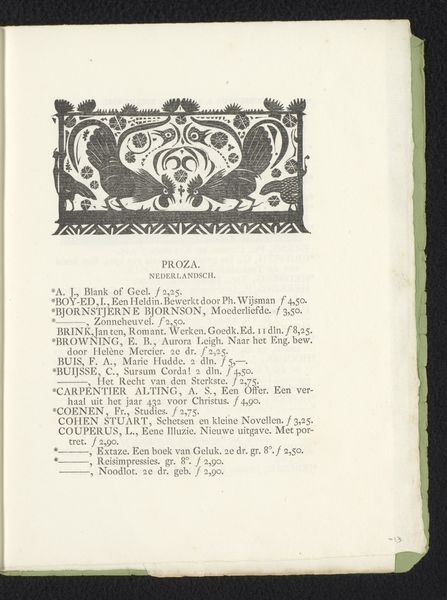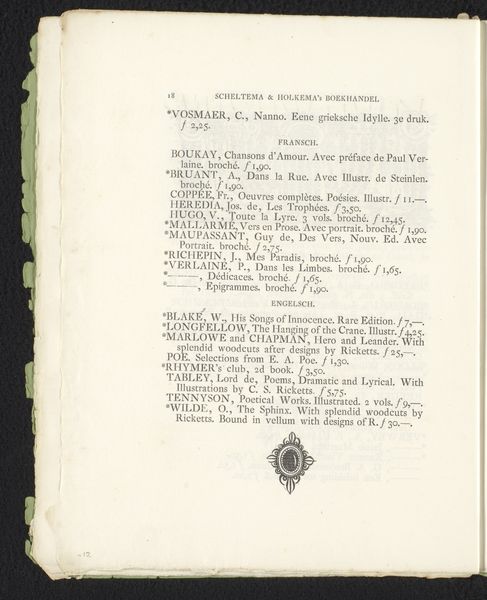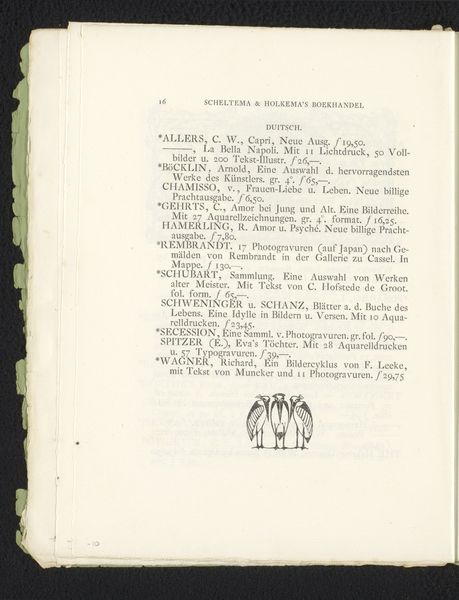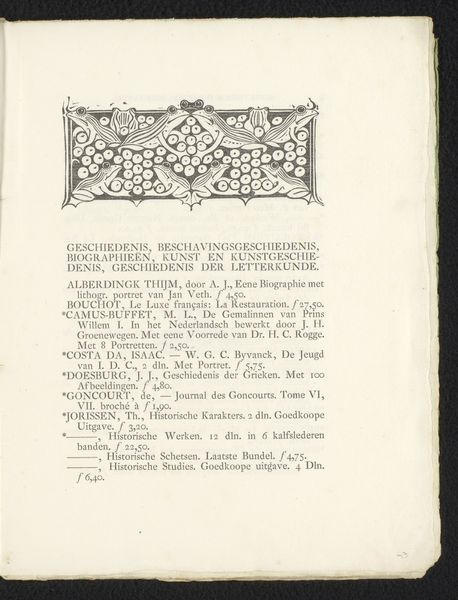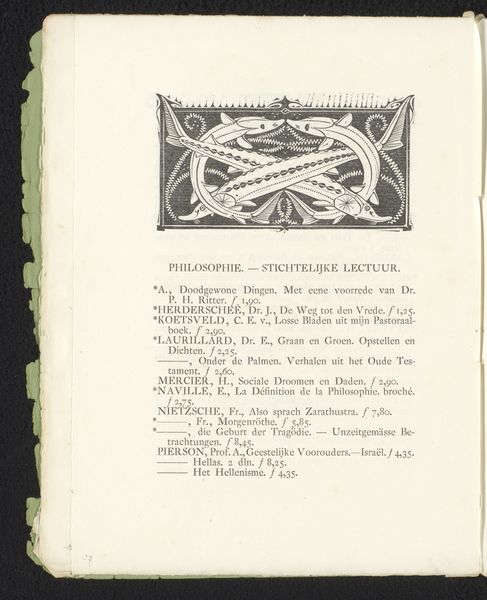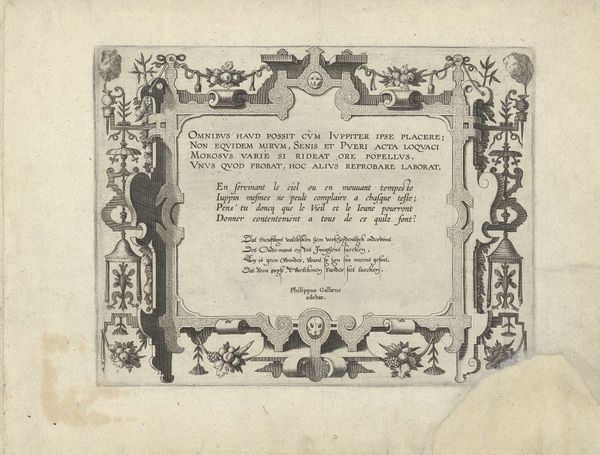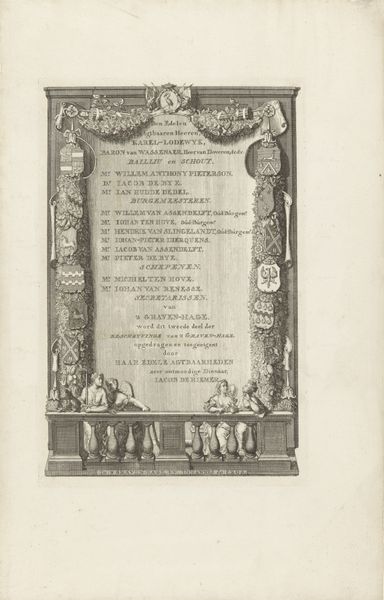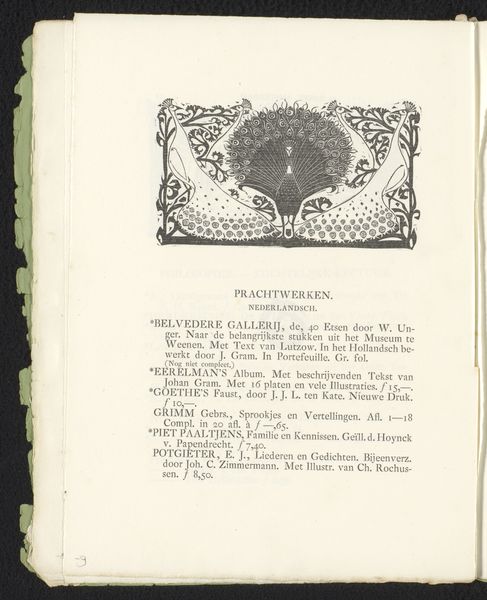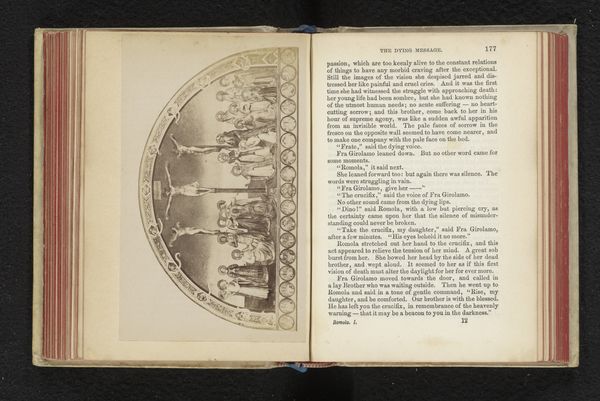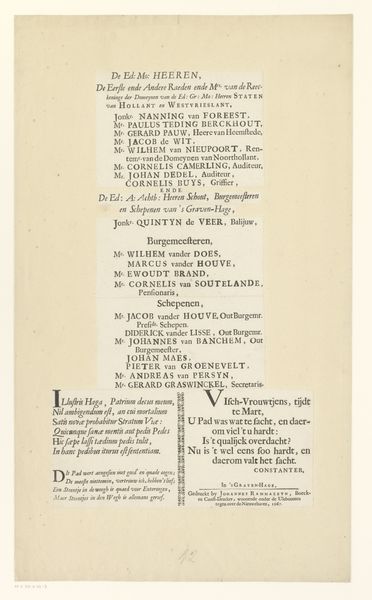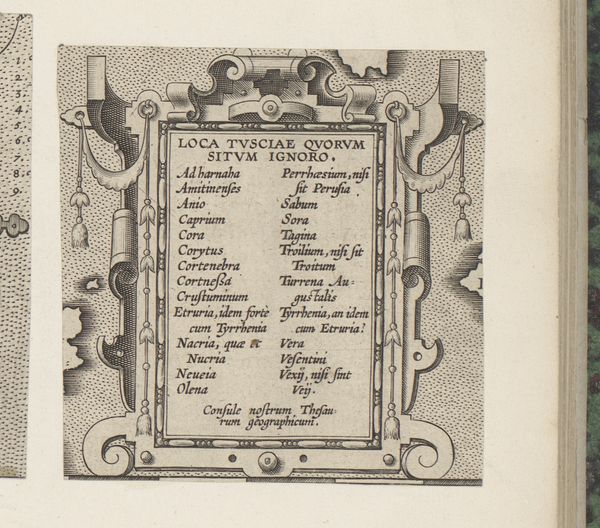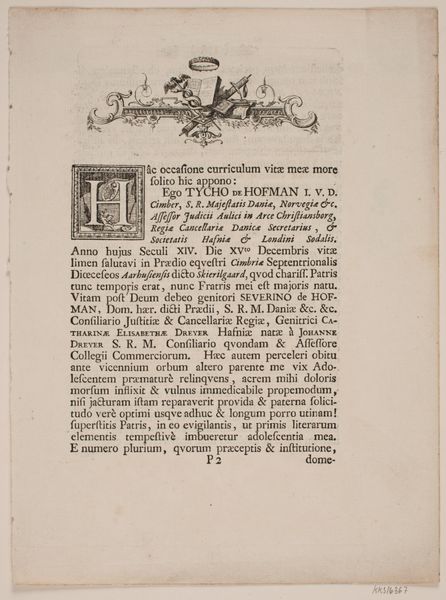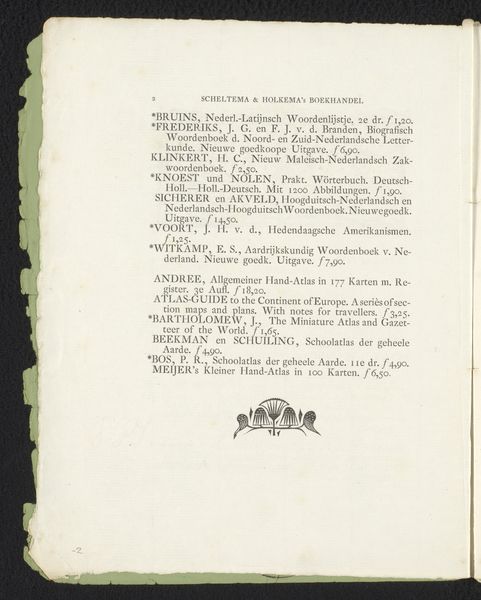
drawing, graphic-art, ornament, ink
#
drawing
#
graphic-art
#
ornament
#
art-nouveau
#
pen drawing
#
pen illustration
#
pen sketch
#
old engraving style
#
hand drawn type
#
personal sketchbook
#
ink
#
pen-ink sketch
#
pen work
#
sketchbook drawing
#
sketchbook art
Dimensions: height 198 mm, width 247 mm
Copyright: Rijks Museum: Open Domain
Curator: Let’s turn our attention to a work currently housed in the Rijksmuseum, "Titelhoofd met sieraden" or "Title Page with Jewelry," created between 1893 and 1894 by Gerrit Willem Dijsselhof. Editor: My immediate reaction is how ornamental it feels. It evokes both nature and elaborate artifice. Curator: Dijsselhof was a key figure in the Dutch Art Nouveau movement. This work, executed with pen and ink, showcases his distinctive ornamental style. The symmetrical arrangement and stylized botanical motifs remind me of medieval illuminated manuscripts and the book design of William Morris. What symbolic significance might you find? Editor: Well, given its creation date within the Dutch Art Nouveau period, also known as the *Nieuwe Kunst*, one cannot neglect how new techniques of industrialized production democratized decoration and ornament, providing access to the rising merchant class of this period. Looking at the artwork in terms of labor, it could also reflect the time-consuming handmade designs accessible to wealthy collectors during the Dutch Golden Age of the 17th century. This connects directly to Dutch cultural identity and a sense of historical continuity. Curator: The jewelry certainly stands out as the centerpiece. Beyond mere adornment, jewels and organic motifs carried loaded associations. The precise geometric patterns and repetition evoke ideas of natural cycles and cosmic harmony that preoccupied artists and designers during this time. Perhaps Dijsselhof hoped to ennoble even everyday objects through the language of symbolism and fine craftsmanship. Editor: It makes me think about labor division within this particular era and cultural obsession. Jewelry carries value—both economic and emotional. I consider jewelry an enduring testament to consumption, but not the craft itself. As mass-produced ornaments flooded the markets, something special had to separate artwork from "mere craft". The focus shifted onto something less easily duplicated by machines: a certain aura of originality. Curator: A fruitful reflection, indeed, to consider how Dijsselhof weaves craft, art, and nature. Editor: And I must add—consumption and production—during the tumultuous cultural climate of the *fin de siècle.*
Comments
No comments
Be the first to comment and join the conversation on the ultimate creative platform.
